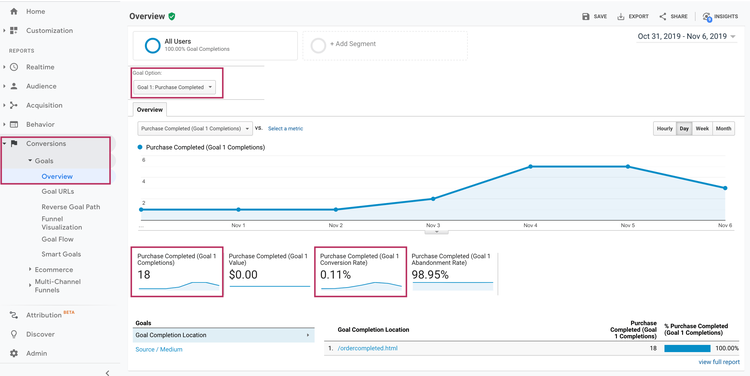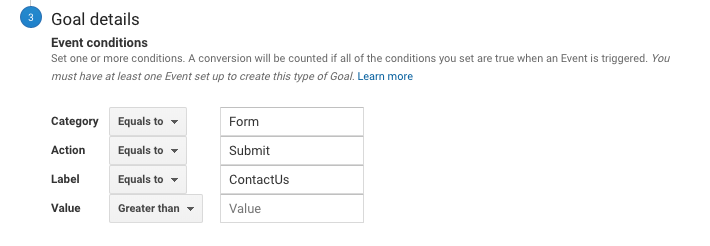Trick Insights on What Data Is Google Analytics Goals Unable to Track
Trick Insights on What Data Is Google Analytics Goals Unable to Track
Blog Article
Discover the Limitations of Google Analytics Goals: Unveiling the Information Kind That Remain Untrackable
As services significantly count on data-driven decision-making, understanding the limitations of devices like Google Analytics becomes vital. While Google Analytics Goals deal important insights right into user interactions, there exist information types that avoid monitoring, positioning obstacles to a comprehensive understanding of user actions. These untrackable data types question regarding the precision and completeness of the analytics information that organizations greatly trust for their digital strategies. Curious to discover the surprise dead spots in your information evaluation process?
Incomplete Customer Journey Tracking
Insufficient individual trip monitoring within Google Analytics can prevent the capacity to properly assess user habits. When the individual journey is not completely tracked, there are spaces in the information that stop a detailed understanding of just how users communicate with an internet site. This absence of insight can cause missed out on possibilities for optimization and enhancements to the individual experience.
One typical problem with incomplete user journey monitoring is the lack of ability to see the complete path that customers take previously completing a goal or leaving the website. Without this info, it is challenging to identify where users may be experiencing obstacles or friction factors that prevent them from converting. In addition, insufficient monitoring can obscure the impact of particular marketing initiatives or web site changes on user actions.
To resolve this restriction, it is critical to establish correct monitoring systems within Google Analytics to capture the whole customer journey. This may entail establishing event tracking, goal funnels, or making use of tools like Google Tag Manager to guarantee that no important interactions go unrecorded. By obtaining a thorough sight of the customer journey, internet site owners can make even more informed decisions to boost individual engagement and drive conversions.
Attribution Challenges
Navigating through attribution obstacles in Google Analytics calls for an extensive understanding of just how different touchpoints contribute to the overall conversion process. Attribution obstacles arise from the complexity of contemporary client trips, where customers connect with multiple networks prior to transforming.
One typical attribution obstacle is the problem in attributing conversions to the proper source, especially in instances where individuals communicate with multiple networks before converting. In addition, cross-device monitoring positions another attribution obstacle, as individuals often change between tools throughout their journey, making it challenging to track their interactions seamlessly.
Offline Conversions
Provided the challenges linked with associating conversions properly in online channels, the dimension of offline conversions provides a significant possibility for marketing experts seeking an extra extensive understanding of their customers' journey. Offline conversions describe actions that consumers take in the physical globe, such as making acquisitions in brick-and-mortar shops or over the phone, going to occasions, or engaging with published materials - what data is google analytics goals unable to track. These conversions are critical for businesses that operate both online and offline, as they give beneficial insights into the performance of marketing projects throughout different touchpoints
Tracking offline conversions commonly postured a substantial difficulty for marketing professionals, as it was testing to attach these activities back to specific online interactions properly. Nonetheless, with improvements in modern technology, such as the assimilation of CRM systems, special identifiers, and discount coupon codes, services can currently link the gap between online and offline data to gain a much more alternative sight of consumer actions. By effectively measuring offline conversions, online marketers can enhance their methods, designate sources much more effectively, and eventually enhance the overall consumer experience.
Cross-Device Tracking
Cross-device monitoring plays an important function in recognizing the interconnected nature of consumers' electronic interactions across multiple tools. In today's omnichannel world, where customers flawlessly change between smartphones, desktops, and tablets, tracking their habits throughout these gadgets is crucial for marketing professionals to get an extensive sight of their customer journey.

In addition, privacy problems and regulations such as GDPR and CCPA have additionally complicated cross-device monitoring. With individuals demanding even more control over their data and boosted constraints on monitoring modern technologies, online marketers need to locate privacy-compliant and innovative methods to link customer interactions throughout devices.
Dynamic Content Engagement
Comprehending individual engagement with vibrant material is critical in enhancing digital advertising methods for improved audience interaction. Dynamic content describes internet site components that transform based upon customer habits, preferences, or various other aspects, using a tailored experience. Nonetheless, tracking individual interactions with dynamic web content presents challenges for conventional analytics tools like Google Analytics.
While Google Analytics can track basic communications like clicks and page views, it might struggle to catch more nuanced interactions within vibrant web content. what data is google analytics goals unable to track. Metrics informative post such as time spent on specific dynamic elements, float activities, or interactions within pop-ups are commonly not quickly quantifiable making use of conventional tracking methods. This restriction hinders marketers' capability to totally understand exactly her latest blog how individuals are involving with dynamic web content and tailor their approaches accordingly

Conclusion
To conclude, Google Analytics objectives have constraints in tracking incomplete user journeys, attributing conversions accurately, capturing offline conversions, tracking cross-device interactions, and determining dynamic material interaction. These restrictions highlight the relevance of discovering additional tracking techniques and tools to get an extra thorough understanding of customer actions and conversions past what Google Analytics can provide.
While Google Analytics Goals offer valuable insights right into individual interactions, there exist information types that avoid tracking, presenting obstacles to a comprehensive understanding of customer actions.Insufficient customer trip tracking within Google Analytics can hinder the ability to properly assess customer habits. When the user journey is not totally tracked, there are spaces in the data that avoid an extensive understanding of how users connect with an internet site.One usual problem with incomplete user trip tracking is the inability to see the complete course that customers take in the past finishing an objective or leaving the website. By getting a thorough sight click to read more of the customer trip, website proprietors can make even more educated decisions to boost individual engagement and drive conversions.
Report this page